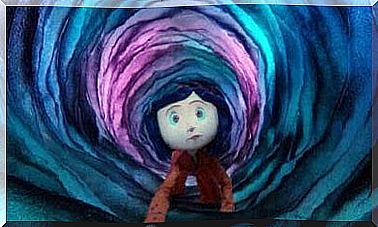Helping People With Cancer, The Heroes Of Our Time

Cancer knocks on the door when you least expect it. The disease appears on the scene daily. It is like an enemy that is never welcome. It all starts with the confirmation of a diagnosis. Then hundreds of questions pop into your head without a pause: Why me? We try to hold on to life, but there are times when the pain hits too hard. Providing help to people with cancer is therefore very complex.
Cancer also has consequences for a person’s mental and physical health after treatment has ended. The most common symptoms are exhaustion and psychological stress resulting from the impact of the diagnosis and the intervention process. Other common problems include depression and anxiety, physical weakness, and problems with attention and memory.
Nothing is as unique as pain. Nothing is more personal than that experience. As Thiebault said, “Damage can be avoided, pain cannot be avoided.” Not all people manage to integrate the pain and deal with emotional or physical pain. And here’s the paradox: the body remains silent when it feels no pain, but the mind hurts when it is silent.
The Tyranny of Social Support
Cancer is a tough battle, and it is essential that we respect at all times the right of the sick to choose how they want to handle their situation So let body and mind communicate all their emotions, including feelings of defeat and exhaustion .
We often use statements of support to provide encouragement and comfort. However, without realizing it, we sometimes generate demanding expectations instead. ‘You are a fighter’, ‘Don’t worry, you are strong’.
In some cases, by showing our love with the best intentions, we impose the image of the ‘sick optimist’ on them. As if patients and relatives are obliged to face the disease with all their enthusiasm and strength. Cancer is a very difficult experience, you don’t always have to show your happy face. Leave room for pain and fear.
The support and giving of love is very important, but we must be careful what we say so as not to give the patient an extreme example to follow and put more weight on his or her shoulders. It is a mistake to turn these people into ‘heroes’ if that means stripping them of their human condition. The burden of their illness is enough. They need our company and our support. We must acknowledge their pain, accept their emotions and appreciate their efforts. We must listen to and consider their needs. This is the best help we can provide to people with cancer.
Giving their family members space to be angry and tired and feel pain is just as important. Don’t hide them by making them feel like they should be “proud” to be parent, sibling, child and so on of “such a fighter.” Of course we have to offer support, but we also have to give them room to fall and get up.

Cancer as a threat to survival
Getting a cancer diagnosis triggers a severe stress response. People with cancer have six major fears: death, dependence, disability, disruption of life, lack of comfort, and mutilation.
Information is essential. Patients who receive adequate information tailored to their needs have better control and are more active during the treatment process. In this sense, the greater the uncertainty, the greater the discomfort.
This information must be realistic. Its primary objective should be to resolve any doubts the person may have about the process. However, you should not base unfounded expectations or idealized hopes on it.
Sometimes this happens when we feel like we need to say something to convey unconditional support, so we don’t think about what we’re saying. Remember, it is not always necessary to say something. Listening to the person’s needs and respecting their time and silences is a way of showing understanding and affection.
Coping Styles
Sometimes it is not easy to understand how our loved ones react to their illness. It is even difficult to understand our own actions when faced with such painful and complex moments.
We lose control of many situations, we don’t know what to do, we get frustrated and try to figure out what the person is thinking or feeling. After all, we don’t want them to suffer. Nor do we want to suffer from it ourselves.
How the patient copes with the disease has to do with the coping style that the patient has. These styles are determined by the patient’s thinking patterns and personality patterns. In general, there are five coping styles:
Fight
These people see the disease as a challenge. “I must manage to keep my life as I have done until now. I have to decide what I can do.’ Even the diagnosis itself becomes a challenge. They think about the control they can exercise over the situation and make an optimistic prognosis.
They try to get a lot of information. Practical and useful information, not excessive information. They are looking for what will help them to play an active role in the process.

avoidance
People with this style deny the negative effects the disease can have on them. ‘It’s not that bad, everything stays the same. There’s nothing to worry about.’ They try to minimize how they perceive the threat, decreasing its importance. They don’t focus on control like the fight coping style folks. They assume a manageable prognosis and underestimate the impact of the disease. People with this coping style may turn to substance abuse as an escape route.
fatalism
Those with this coping style adopt an attitude of passive acceptance. “Everything is in the hands of the doctors. God has determined my destiny.” They give up. They see the threat as not too serious and place control outside of themselves (doctors, God, etc.). They are patients who do not use active strategies to cope with the problems and who cannot adapt well.
helplessness
The patient feels overwhelmed. “There’s nothing I can do, just wait to die.” He sees the diagnosis as a very serious threat, a great loss. And so he feels like he has no control over the situation. He doesn’t even believe in controlling individuals like doctors. The patient with this coping style can give up good hygiene and eating habits. Mood disorders are also common in this group.
Fear
This group experiences a strong reaction of anxiety and fear. “I have to look for symptoms, I have to find out everything I can.” The patient experiences a great threat and constantly doubts his control over the situation. He is also very insecure about the future. Therefore, there is a constant need for reassuring information. This coping style can be associated with anxiety and somatoform disorders.

Quality of life of people with cancer
There are three basic criteria for understanding quality of life. First, it is completely subjective. Each person is unique and values their quality of life based on their experiences, aspirations and individual preferences. It is also multidimensional. That is, we must take into account the general consequences of the disease and its treatment. Finally, it is temporary. Quality of life goes hand in hand with the present. It changes with the situation.
Quality of life has always been closely linked to the disease. Patients want to live, not survive. This means that the level of activity and autonomy of the patient is taken into account. It is also important to take into account the physical consequences of the disease and the psychological state (anxiety, depression, self-esteem, etc.).
We must also not forget the social dimension. It is very important to be satisfied with social relationships and to have a support network. Of equal importance is the spiritual life. Finally, material resources such as money and medical care are important.
In short, it is essential to consider the needs of the person. Respect for and assistance in making decisions based on his evaluations and desires will help the patient better cope with adversity and overcome adversity. It’s not just about adding years to life, it’s about adding life to years.









